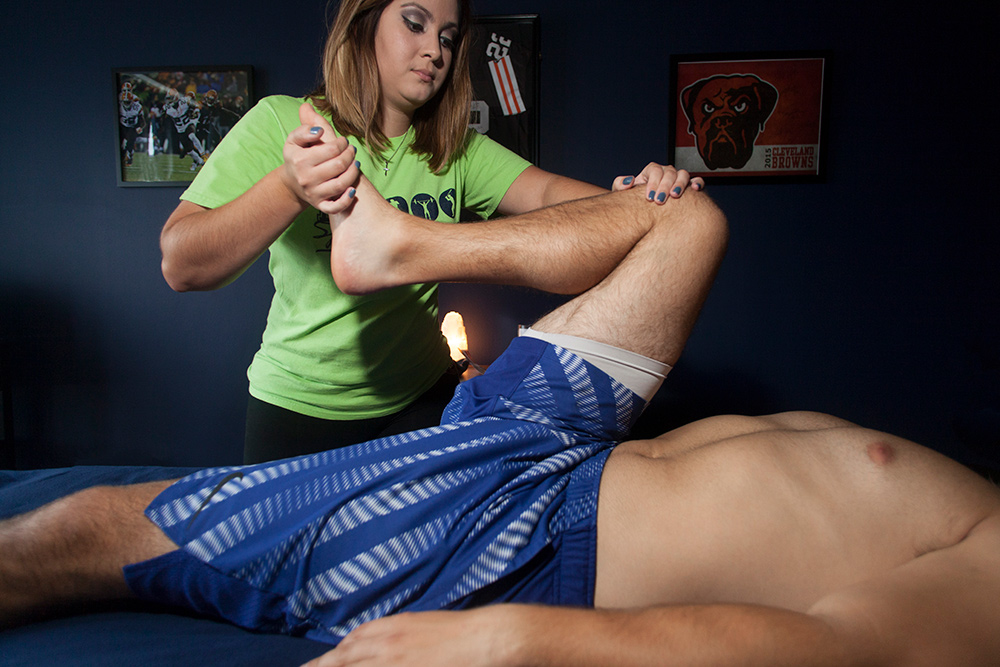If you have participated in any kind of fitness or athletic activity, either on a professional or recreational level, you’ve probably endured the wrath of soft tissue injuries. It often starts off as a minor irritation, and you try to shrug it off. Then it becomes more irksome, and you try hot or cold packs, topical creams, and pain relievers. Eventually, it gets to the point where it’s difficult to participate in your favorite activity and maybe even day-to-day tasks, so you start to look for more advanced solutions. There are many different options for finding relief, but one technique seems to rise to the top with fast, proven results: Active Release Technique, or ART.
An Introduction to Active Release Technique
ART is a soft tissue based massage method (developed and patented by Dr. P. Michael Leahy, DC, CCSP) which focuses on muscles, tendons, nerves, ligaments, and fascia. It can be applied to a wide range of conditions such as:
- Headaches/migraines
- Back pain
- Shoulder pain
- Tennis elbow
- Carpal tunnel
- Sciatic nerve problems
- Knee conditions
- Plantar fasciitis
- And more
These types of overused-muscle ailments are often brought on by pulls, tears, micro-trauma, or not receiving enough oxygen to that area of the body. When any of these occur, the body develops thick scar tissue which inhibits the muscle’s ability to move as it should. As it continues to build, muscles wear down and become weaker and tendons often develop tendonitis. This results in a shorter range of motion, pain, weakness, and tingling or numbness.
ART also targets nerve entrapments (such as carpal tunnel) where the nerve is encompassed by scar tissue which puts pressure or tension on it during certain movements or positions.
So if you suffer from any condition which comes from overused or exhausted muscles, you’ll benefit from ART treatment.
What Happens During ART Treatment?
Every patient is different, so every treatment is different. Sometimes only two sessions are required, other times a patient will need up to six – it depends on a myriad of elements such as the condition, the amount of scar tissue, the physical health of the patient, etc. Sessions are typically shorter than a normal massage, which is in part due to the intensity of the treatment.
A session using ART is both an examination of muscles as well as treatment. The therapist assesses the damage to the muscle/nerve/tendons/ligaments so they can decide which specific movements (over 500 possible) and how much direct tension they need to apply during the session. ART is definitely not a cut-and-paste approach to treatment.
Because there are so many possible movements, or protocols, not every massage therapist offers ART sessions – they must first earn a certification which involves extensive training. Therapists must also be able to feel the muscles properly which takes an advanced touch.
Once the practitioner has diagnosed the soft tissue, treatment can begin. And ART isn’t a completely uninvolved treatment for the patient – the therapist will ask him or her to actively or passively move a body part during the session. That movement coupled with the therapist’s protocols work in tandem to separate the built-up scar tissue.
Because pressure is directly applied to the problem area, you may experience some discomfort during the process; this is often described as a “good hurt.” But the practitioner will never administer more force than you can tolerate.
Bring On the Benefits
So then the question is: who can benefit from Active Release Technique? In short, anyone who experiences pain as a result of a soft tissue injury. ART is often used in a clinical setting for professional athletes, but it is also practiced in an office setting, in homes, with amateur athletes, and more.
Successful ART sessions mean proper movement and muscle function. That, in turn, means better performance. Scar tissue causes extra tension which forces the muscle to work harder and use more energy for the desired action. When the strain is removed, the muscle is freed up to move as it was meant to, reducing reaction times and diminishing pain or discomfort.
If you feel like you’re out of options to get your pain under control, ART treatment is worth exploring.

